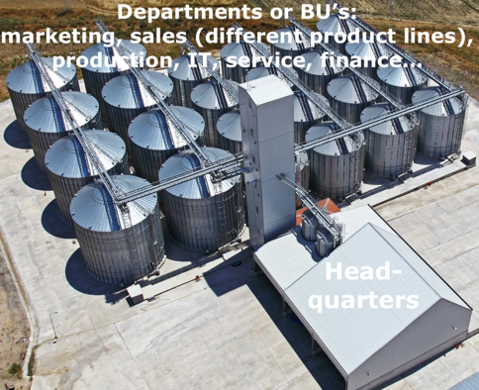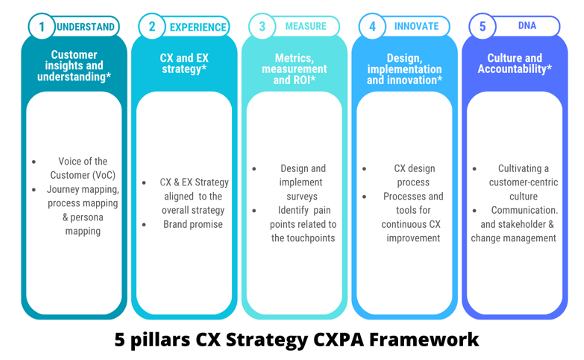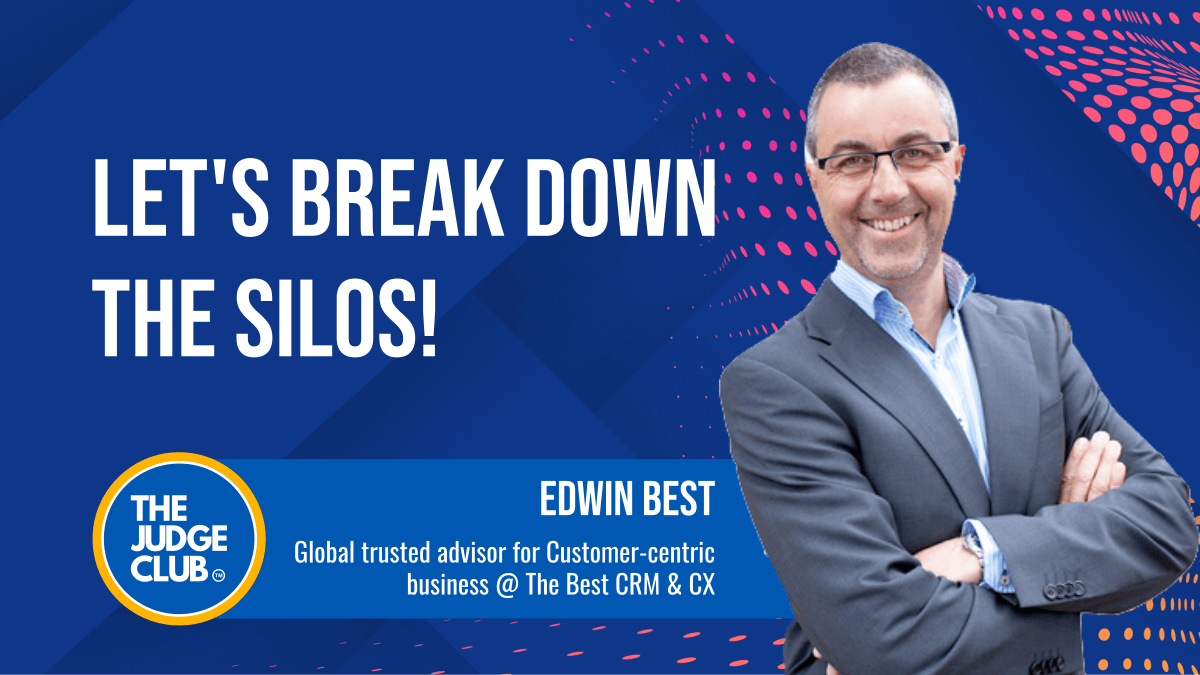In April 2023 I have held a webinar together with Awards International about silo thinking. Silo thinking is both a global top CX issue and a global top business issue; A bad customer experience and a bad employee experience causes an ineffective and inefficient operation. As an outcome: a high churn, a bad CLV (Customer Lifetime Value), complaints and so on. In this blog I’ll cover the following topics. What causes silo thinking? What are the different types of silo thinking? How does silo thinking affects the business? What’s the difference of silo thinking related to short money businesses and related to long term money businesses? How to solve silo thinking? Read on!
- Silo thinking?
- Different types of silo thinking
- Characteristics silo thinking, long term money and short money
- How to solve silo thinking
- More information and the author
Silo thinking?

What customers wants is “get their jobs done”. They don’t care how an organization is organized. They want a seamless – brand – experience across all touchpoints, without any hassle. But organizations are still organizing the business in a “vertical way”. For example, management and KPI’s per department. As a result; A bad customers experience, a bad employee experience and a bad business outcome.
- Bad customer experience. A bad customer experience due the customers “horizontal journey” across the – vertically organized – departments. Customers falls between two stools, the different departments because there is not or a bad handover between departments; There’re no cross-department processes and no cross-border collaboration. For example, a handover from sales (an order with specs) to production. Or a handover from marketing leads to sales for the follow up.
- Bad employee experience. A bad employee experience because the staff must serve unsatisfied customers. It is very hard for the staff to find the right information which is in the head or system from the other departments. The staff cannot pay the right attention to the right customers because of the silo issues.
- A bad business outcome. A bad business outcome: to say it short, an ineffective and inefficient operation. Which leads to a high churn, a bad CLV (Customer Lifetime Value), a lot of complaints, and so on.
Different types of silo thinking
A summary of different types of silo thinking, mostly they are in the “mix”: a combination of different silo’s.
- channel silos: different brand experience per touchpoint / silo
- data silos: mismatching/ missing data
- goal silos: KPI’s per silo
- metrics silos: metrics per silo
- operational silos: quality, timing or work doesn’t match recipient’s needs
- organizational silos: the right hand doesn’t know what the left hand is doing
- process silos: processes per silo, no end 2 end processes
- regional silos: different – global- business cultures
- tech silos: incompatible or stand- alone technology per silo
- vision silos: strategy and vision per silo
- IT silos: digitization and IT projects to serve the customers fails.
Characteristics silo thinking, long term money and short money
The characteristics for silo thinking are in my point of view related to the “DNA” of the business. Is it a “long term money” driven business or a “short term money” driven business.
Long term money

In my experience, silo thinking is most of the times an explicit issue; It harms CX initiatives like cross department collaboration. I see the following needs with silo issues with long term money businesses:
- journey mapping initiatives to overcome silo thinking. E.g., drive cross department collaboration
- silo thinking as a part of the CX strategy
- with VoC analysis, what is the perception of the customer?
Short term money

In my experience, silo thinking is most of the times an implicit issue. It becomes an explicit issue at the moment it harms the business (very) hard and there is a high sense of urgency. I see the following needs with silo issues with short term money businesses with a high sense of urgency:
- a lot of complaints due a bad handover because of limited processes and collaboration between departments
- high operational cost due an ineffective – silo driven – operation
- high churn due unsatisfied customers and unsatisfied employees
- missed opportunities, it is very hard to achieve cross selling
- a bad reputation
How to solve silo thinking
Solving silo thinking is in my opinion also related to long term money and short-term money.
Solving silo thinking with long term money business

An approach with the CXPA framework. Depending on the context and the starting position, start with one – or in connection – pillars:
- understand
- journey mapping current state
- VoC, solicited & unsolicited feedback
- experience
- touchpoint optimization, outcome Journey mapping: translation in CRM
- brand Promise
- measure
- set up surveys
- innovate
- future state journey
- close the loop
Including a strategy to establish a culture with cross department collaboration with a a new style of leadership (servant leadership).
Solving silo thinking with short term money business

An approach with solving the issues; Complaints, high operational cost, establish selling, issues to succeed with digitization projects (IT-silos).
For example:
- with CRM connect the silo’s including a change – cross department collaboration, leadership – strategy.
- with Biz Dev Ops (or tribes, chapters and squads) manage the collaboration between business and IT
In the current economic downturn, turning business issues in short term solutions as a first step for a long term CX & EX strategy.
More information and the author
The Judge club offers frequent webinars about different CX subjects. From Awards International point of view, reflect and learn of the best of the best through the different Customer Experience Awards. Exchange views about silo thinking? Please contact the author:
- Global trusted advisor customer centric business
- Gulf Customer Experience Awards: judge, chair, ambassador
- International Customer Experience Awards: judge, chair, ambassador, steerco

